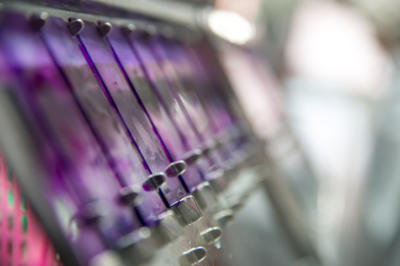New antibiotics needed: Acinetobacter baumannii
Posted on November 18, 2019 by Laura Cox
In 2017, the World Health Organization (WHO) published the ‘12 Priority Pathogens’: a list of twelve microbes that are becoming increasingly resistant to current antimicrobials. These twelve pathogens are thought by WHO to pose the greatest threat to human health. To promote awareness during Antibiotics Awareness Week, we will be publishing three more blogs in our New Antibiotics Needed blog series starting with Acinetobacter baumannii.
Acinetobacter baumannii

A. baumannii is a short, round-ish, rod-shaped bacterium almost exclusively seen in hospital environments. This bacterium causes pneumonia, bloodstream infections and wound infections, particularly in burn patients.
Professor Paul Baumann, American microbiologist based at the University of California, Davis campus (UC Davis) first isolated Acinetobacter baumannii from soil in 1968. He and long-time collaborator (and wife) Professor Linda Baumann were the first microbiologists to use genetic techniques, including DNA sequencing, to characterise endosymbiotic micro-organisms.
Top priority
Since the 1970s, A. baumannii has become resistant to more and more antibiotics, including ‘last-resort’ treatments such as carbapenems. As treatment options continue to dwindle, in 2017 WHO declared carbapenem-resistant A. baumannii the number one micro-organism of most concern out of the 12 Priority Pathogens.
In addition to quickly developing its own, A. baumannii readily accepts resistance genes from other micro-organisms, meaning that antibiotic resistance in these bacteria has increased dramatically in a short space of time. Most concerning is the widespread populations of carbapenem-resistant A. baumannii (CRAB). Carbapenems are considered the front-line treatment for infections with bacteria resistant to most antimicrobials and – although previously used as a last-resort treatment – as more and more bacteria resistant to multiple antibiotics emerge, carbapenems are being used woefully frequently.

Wide-ranging
This species of bacteria can survive in the environment for long periods of time due to being resilient to pressures such a drying out and extreme pH levels. This can make outbreaks particularly difficult to manage, especially in hospitals, as the bacteria can persist in the environment and will not be killed by some cleaning products.
Because of its persistence in the environment, resistant A. baumannii has travelled around the world. CRAB has been reported in every inhabited continent, although it was originally thought to be restricted only to Europe. One significant driver in the spread of resistance is war; in the USA a dramatic increase of CRAB infections in hospitals was seen after the return of wounded soldiers from Iraq and Afghanistan between 2006-2008.
In their review Emergence, molecular mechanisms and global spread of carbapenem-resistant Acinetobacter baumannii, Mohammad Hamidan and Stephen Nigro discuss the origin of the CRAB strains of A. baumannii and how it has acquired resistance to so many antimicrobials in such a short space of time. This open-access review, published in the journal Microbial Genomics, is the seventh in the New Antibiotics Needed collection.

